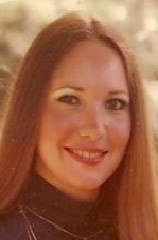From ghoulies and ghosties
And long-leggedy beasties
And things that go bump in the night,
Good Lord, deliver us! –A Scottish Prayer
And long-leggedy beasties
And things that go bump in the night,
Good Lord, deliver us! –A Scottish Prayer
Yes, it is Halloween! The children are thinking of scary things that go bump in the night, just as we did at their age. But now when I hear the word bump, I think of one of my favorite books written by Ralph Parlette entitled The University of Hard Knocks, The School That Completes Our Education. Parlette wrote that life is the University of Hard Knocks and tuition is free. The books are the bumps we experience as we go along life’s journey. If we are wise we learn them and move forward. If we are “fools” we must experience them again and again until they are learned.
In his book Parlette wrote of buying some apples from a grocer. Looking into the barrel he saw some large beautiful apples but looking into the sack he was given by the grocery he saw only one large apple and the rest were smaller. He thought the grocer had placed the larger ones on top to help his sales. But in fact the grocer had nothing to do with the placement of the apples. The apples themselves had decided their placement on their own while being delivered by the farmer.
Apples placed in a barrel then in the back of a wagon and carried over a rough country road to town would shake at each bump in the road. With each bump the larger ones shake toward the top and the smaller ones shake towards the bottom. This occurs with beans, nuts, balls fruit or anything you might try. Size determines placement. Parlette said, “Equality of position demands equality of size. Let the little one grow bigger and he will shake up. Let the big one grow smaller and he will shake down.”
That leads us to our bumps or adversity and what to do about them. Shakespeare said, “Sweet are the uses of adversity.” Revelation 21:7 tells us “He that overcometh shall inherit all things.” With each bump in the road and each shake of the barrel we all move. The same shake that sends the bigger ones up send the smaller ones down. When you feel the bump and experience the shake learn from the adversity and grow. Let the little one grow bigger and he will shake up.
We are all in that barrel of life. All around us everything is shaking; every community, work place, school and home. When things go bump I think “Shake That Barrel”, learn from it and look upward for my new placement in life. Things that go bump aren’t always a bad thing. “Shake That Barrel”.


































